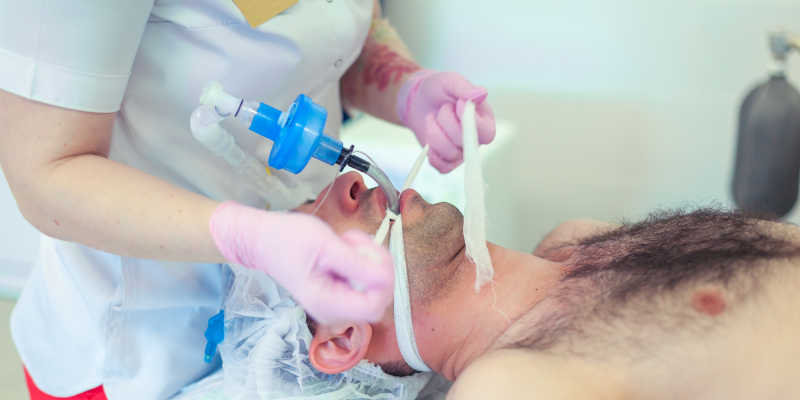
In a perfect world, a patient will be sedated before intubation, but as emergency care providers know, conditions are not often optimal and other approaches are necessary.
Awake tracheal intubation (ATI), placing an airway device in the trachea of a patient who is awake and breathing, can be a successful and safe option for patients with an anticipated difficult airway, a history of intubation struggles, or a weak cervical spine. Nevertheless, it requires experience and focus to correctly perform.
Knowledge is key
Knowing how to properly execute an ATI will allow for a quick and efficient way to help a patient suffering an airway or respiratory emergency. Previous research claims that having two anesthesia providers is key: one to perform the procedure and one to monitor the patient.
Using visual aids, such as checklists when time allows, improves the overall consistency and communication among medical teams. According to the Difficult Airway Society, the main practical elements of a successful ATI can be broken down into four categories:
- Oxygenation
- Topicalization
- Sedation
- Performance
Oxygenation
It is highly recommended to administer oxygen to patients during ATI. Oxygen should be given immediately upon arrival, and the distribution of oxygen to the patient should be continued throughout the entire ATI process. Oxygen masks can be used for this, but the most optimal technique would be the use of high-flow nasal oxygen.
Topicalization
To ensure the success of an ATI procedure, the topical application of local anesthetic must be spot-on. It is best practice to use 20 to 30 initial sprays during inspiration.
Vasoconstriction of the nasal passage – blood vessels constricting, can decrease the patient’s chance of bleeding from their nose. A variety of topical nasal decongestants can increase airflow and reduce blockages, and it is recommended that these be used before nasotracheal intubation.
Sedation
Although sedation is not required during ATI, minimal sedation is sometimes recommended and encouraged to reduce the patient’s anxiety. Minimal sedation is a drug-induced state where the patient can respond to verbal commands, and the airway, ventilation, and cardiovascular functions remain unaffected. There is always a chance of over-sedation, especially within certain age demographics, which is why it is strongly recommended the administration of sedation be done by a trained independent practitioner, if possible.
Tracheal tube placement check
Without the proper tube placement, ATI can be ineffective. The two ways to check that the tracheal tube is in the proper place are:
- The practitioner must visualize the tube going through the vocal cords.
- The practitioner can perform a capnography to confirm proper tracheal tube placement. This can be done by measuring the respiratory rate and carbon dioxide exchange with each breath.
This step should be done while the patient is sitting up, and the operator should ensure they can see the patient’s monitor, video screen and any infusion pumps the patient may have.
SALAD
A vital piece of any intubation procedure is for the provider to set themselves and patient up for success before the process begins. Be prepared to utilize the Suction Assisted Laryngoscopy and Airway Decontamination, or the SALAD technique. It uses aggressive suction, ideally with a specifically designed catheter, to quickly clear the airway before intubation. Read more about the technique here. Given that intubation failure is possible for even veteran providers, this is a crucial step.
Effective ATI leads to safer care
With proper knowledge and practical experience, ATI can be a safer and easier option for patients because spontaneous ventilation and intrinsic airway tone are maintained throughout the process. Medical professionals educating themselves and keeping a checklist of proper procedures on hand can save someone’s life.
Editor's Note: This blog was originally published in March, 2023. It has been re-published with additional up to date content.
















